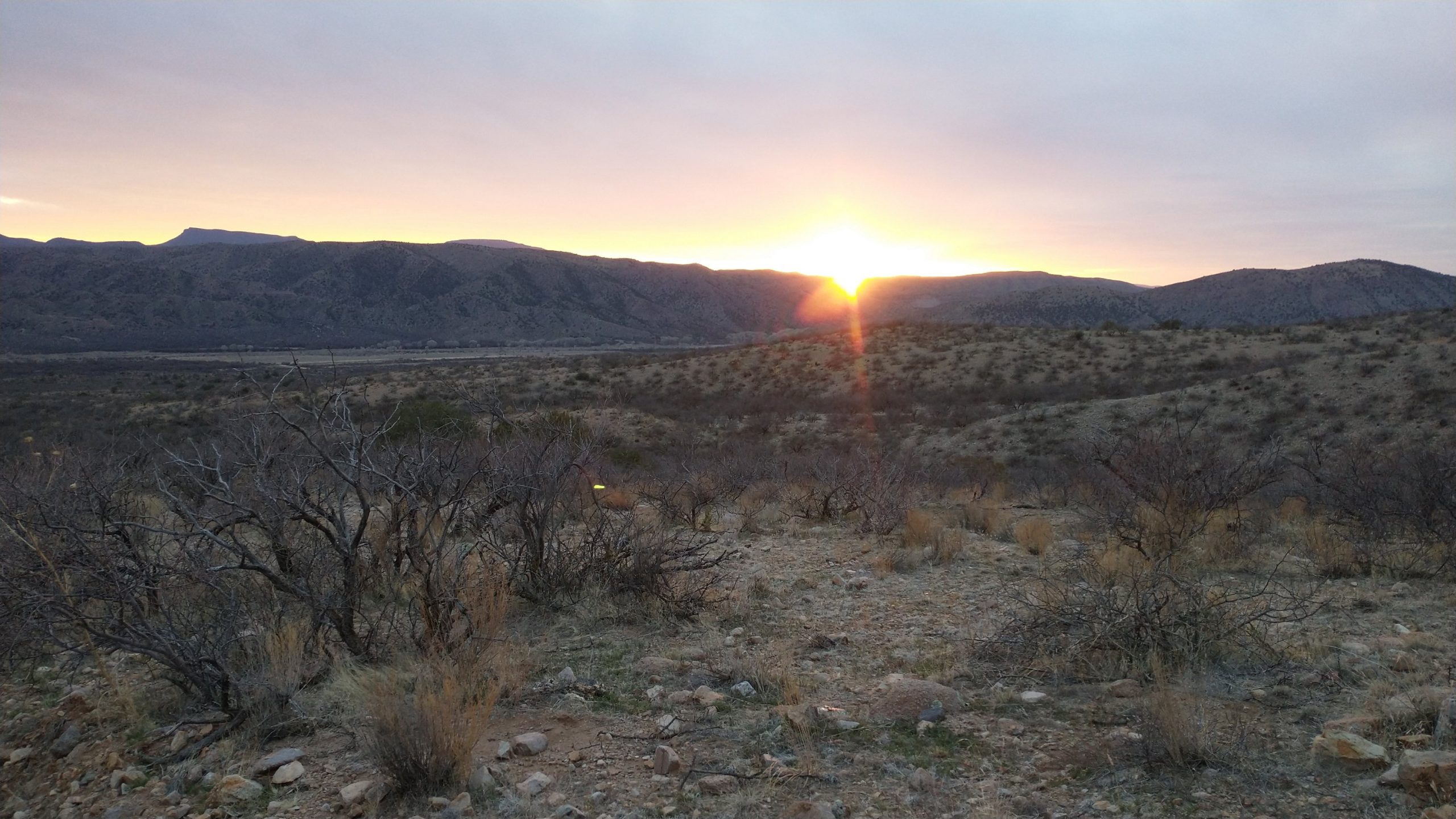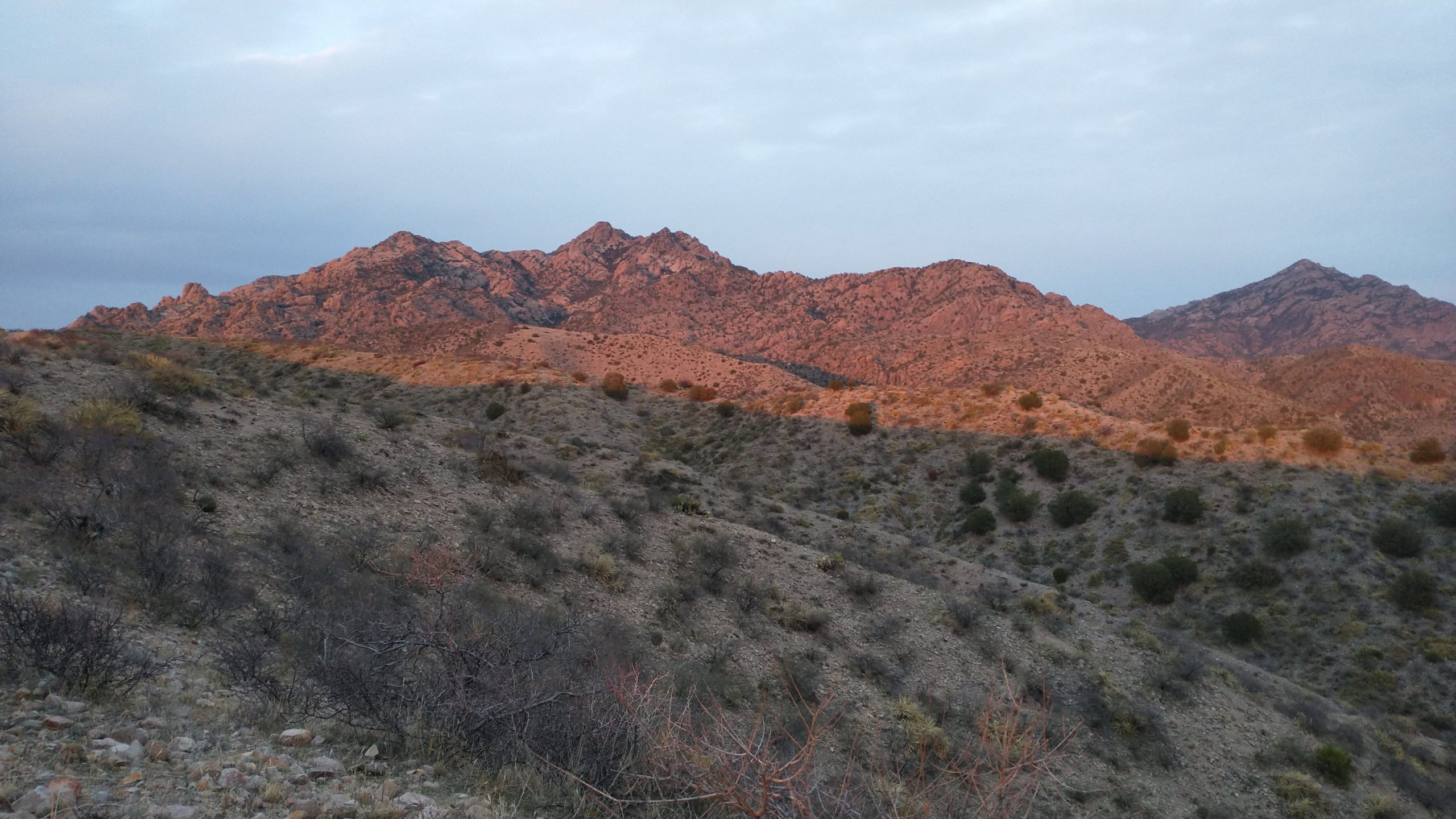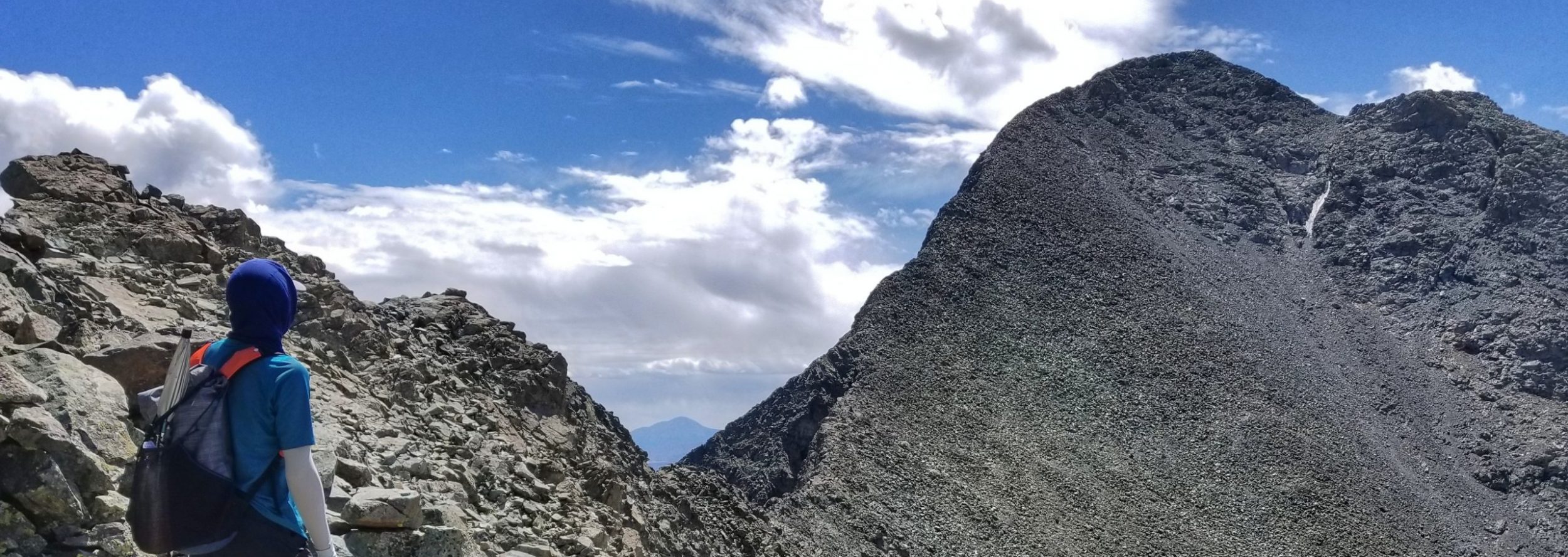Thursday Mar 25th, 2021, 0615-1920
North Bypass Cement tank to stock pond off mm 8.3 of section 8, mm 156
24.5 miles
Just as I predicted, everything was super wet in the morning….my first time packing a wet tent this hike. But my site selection was still pretty good. I shortly found frost in the open field. At least being under the tree seemed to keep the temperature higher. I was a bit cold in the early morning, but not so cold that I couldn’t sleep.
I set out first and was immediately confronted by a maze of fences. Just like a cow, I was funneled into a corral, wondering around trying to figure a way out. I climbed over several gates and fences, only to find more blocking the way. I must have wasted 10 minutes escaping this trap. I also got tangled in loose pieces of barbed wire that were littered all over the ground. I felt like I navigating a series of booby traps. Cattle ranching sure has a lot of negative impacts on the land, this being just a small one. I was seriously reconsidering consuming beef products ever again.
It got better (as in worse). As I continued along the tract, I came to a dry stock pond that had 10 rotting cow carcasses strewn about. They’d been there for some time…years perhaps. It was a grisly sight. Also consider that almost all of these stock ponds are built at the head of watersheds into Aravaipa canyon. All this cow waste drained into beautiful and pristine Aravaipa creek. While all the shiny new REI backpackers (more on this later) got to traipse around the beautiful canyon, I got to see the ugly side of things up above, unfortunately.
Shortly we came to a solar powered tank and were able to collect good clean water from the top of the enclosed tank. We then took a right to go down a wash and past a ranch. The official route had us going left and way out of the way to avoid the ranch. It seemed that nobody was around and we slid by without notice.
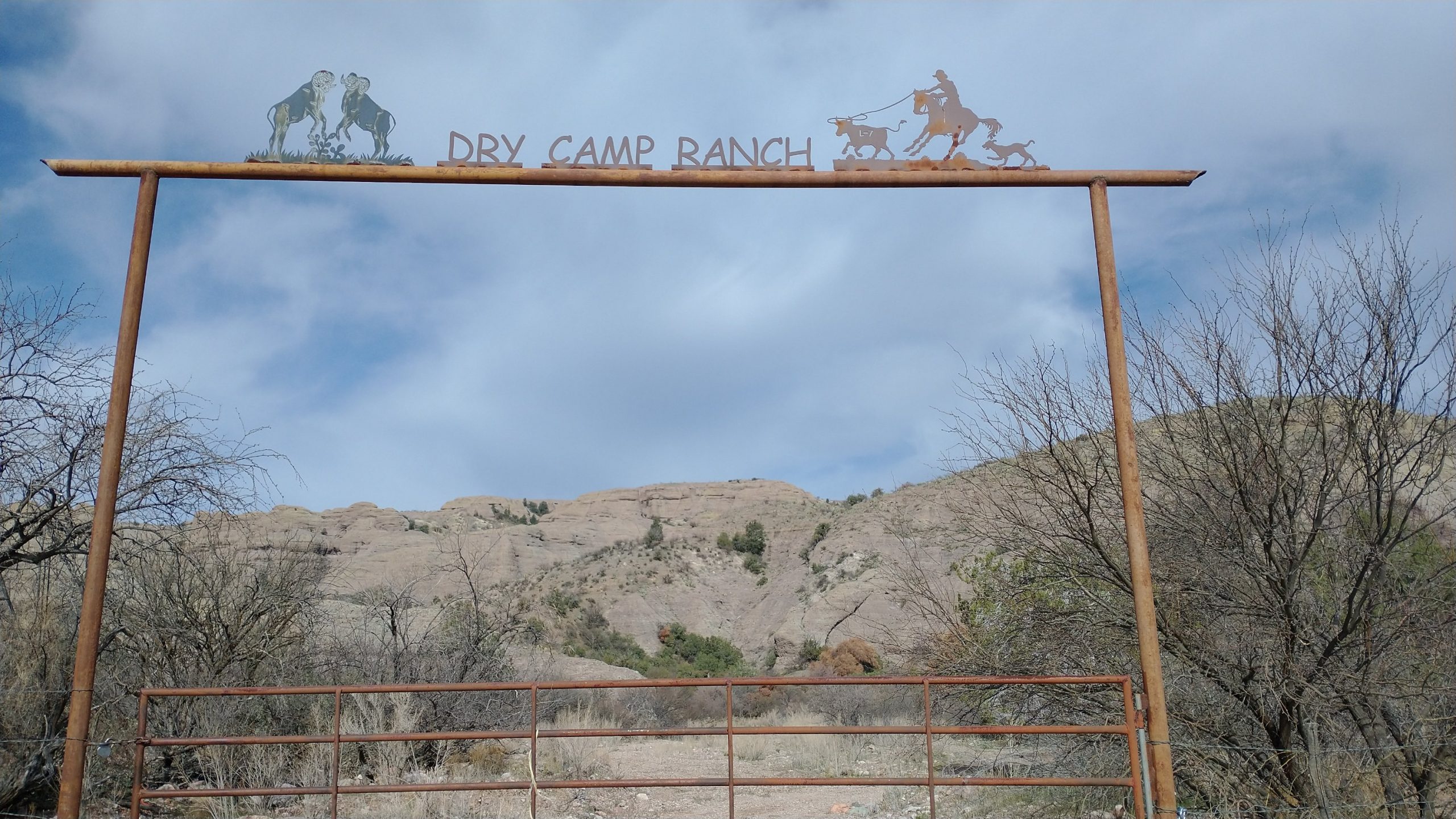
This shortcut saved us about 3 miles and some elevation gain. Plus it was nice walking in the valley, admiring the canyon walls. Later we talked to several people that knew the rancher and they all stated that she wouldn’t have minded us walking by. We are the least threatening of people. I respect private structures and property, leaving things as I find them, if not better. I don’t have campfires, don’t leave trash, and generally don’t even make noise. All I leave are footprints.
The road eventually dumped us back into the main canyon at the east entrance permitted area. We met some hikers just coming out and later a very nice guy that was a restoration ecologist for The Nature Conservancy. He answered some biology questions I had about the canyon. He also told us about the situation with the ranger being gone and the ever-increasing presence of corporate-led tours in the area. It would seem that companies like REI have been stepping up their game and profits by running multiple tours a month in the peak season. I’m not sure what process they went though in obtaining permits but I hated to think that individual and independent adventurers like us were competing with corporations for such limited access to the canyon. I later looked up the tour offerings and the price was $1,300 for REI members and $1,400 for non-members for a 4 day tour (1.5 days of which was travel to and from Phoenix). This Pay to Play mindset to access public lands really bothered me. Shame on you REI…I’d think about this situation any time I needed to purchase recreation gear and probably take my business elsewhere. Not that they care about loosing my business, since they’re making so much money off these tours. Also, not like I wanted to go backpacking with any of their heavy, mass-produced gear. Alright, we all agree to disagree.
We continued up the road from the canyon, crossing the creek about 5 times. I put my camp shoes on to avoid wet feet…I’d been so spoiled with dry feet during the hike. We saw several javalina and Coatimundi…a racoon-like animal that I’d only ever seen in Costa Rica before. I also identified a vermilion flycatcher…a brilliant red bird even more dazzling than a cardinal. I forgot to mention that I also saw cougar prints the day before.
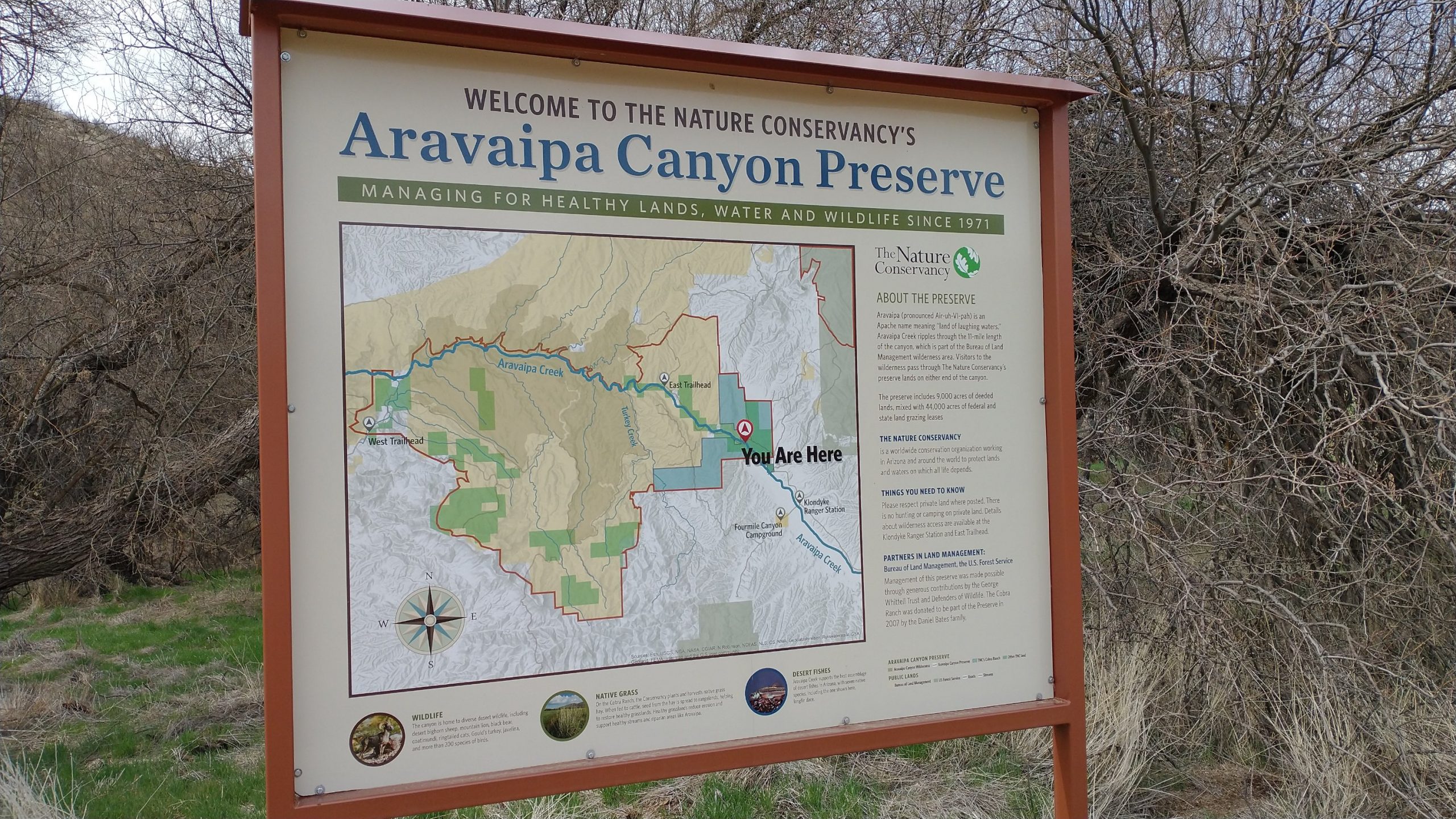
We left the shady cottonwood-lined valley to enter the dry desert once again. Old homesteads lined the road as we presently came to the defunct Klondyke general store. New owners Beth and David were working to restore it, as well as the lodge, RV and campground. We got our resupply box (TS dropped it off weeks before but they also accepted mailed packages). We didn’t even need the box, as we were still carrying about 2 extra days of food due to our unplanned stop in Mammoth. We considered leaving some there to pick up later, but didn’t want to presume too much about our upcoming trail angel visit, described later.
To alleviate some of our weight, we went next door to the closed BLM ranger station to cook our dinners. They offered a porch and water hose to hikers…even if there were never any rangers to be found. We had a pack-explosion, also known as a garage sale, whereby we laid everything out to dry and take stock of. It’s a very hikertrash thing to do all over the porch of a government building, but it’s not like a single person came by while we did this.
Bellies full, water bottles filled, we retraced our steps back down the road for 2.5 miles to where the official route broke off. Yes, we walked an additional 5 miles for food we didn’t even need. The rest of the evening was a standard affair …walk up a wash, then 4wd road, then come to a dry stock pond to find a flat tentsite in the above wash. The sun had set by the time we got to camp, so we had to seek our nests in the dark. I found a passable bit of sandy real estate under a pinon pine to pitch my tent. It was one of my worst pitches ever but did the trick…I was dry the next morning.
The next section passed through the rugged Santa Teresas, a sky island range that promised to be quite an adventure. They looked like they were on fire in the glow of the setting sun.
